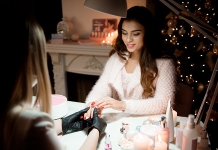The importance of Consultation Cards during COVID
With new salon and treatment protocols in place, it's important that you don't overlook completing and retaining client consultation cards as part of your ongoing professional practices, but has what you need to include changed because of COVID-19 restrictions? We spoke to
ABT's Dave Horton to find out more.
 You should already be keeping client record cards as part of your terms and conditions and the declaration questions agreed with ABT when taking out the policy. Without these your policy may be invalid. You should already be including on your treatment record cards, client's name and contact details, this could include address, phone number and an email.
You should already be keeping client record cards as part of your terms and conditions and the declaration questions agreed with ABT when taking out the policy. Without these your policy may be invalid. You should already be including on your treatment record cards, client's name and contact details, this could include address, phone number and an email.
Client record cards should also include the date, time and the treatment title that was had by your client. You could go into further details and note the products you used during the treatment or any comments mentioned by the client in reference to the treatment.
If required it could be worth noting the date that you carried out your client's last patch test so to keep in line with policy and manufacturing guidelines which could require you to patch test every three months.
You could go into further details and note if any retail items were bought and aftercare advice you have provided, however we do understand that sometimes not all of this can be done after each client; the more detail that is kept the better it is to assist with a potential claim.
Can I carry out a Consultation virtually before their appointment?
Online Consultations are fine, ideally with a conversation via Skype, Zoom or similar so that the therapist can confirm with their own eyes there is not issue.
Salons / mobile professionals should only perform treatments that they feel safe and qualified to perform. If there are reasons during a consultation that they feel the treatment should not go ahead, then they should not continue.
How important is patch testing and where do I record the results?
Patch testing of tinting and perming products on eyelashes and brows is imperative to ensure that a client is not allergic or has a reaction to the products you are using. Reactions to chemical ingredients within hair colouring or perming solutions can be painful and dangerous to clients. For your insurance to be valid, you must work in line with your manufacturer's guidelines and ABT's policy wording. Always carry out a patch test:
- Before the provision of the first treatment
- After a change in a client's medical history. ABT has not received any update from the insurer that would suggest a vaccination would represent a change in a client's medical history (unless of course their GP has advised them of this).
- If you have changed any preparations used in lash/brow tinting/perming treatments or changed the manufacturer of your products
- At a 12 month interval since the last treatment
Should a client experience a reaction to products that you have applied to them during a treatment and can prove that you did not patch test them appropriately, you could be liable to legal action against you.
You must continue to operate your business in line with guidelines relevant to your local area. If your salon is unable to open yet, or you are not yet allowed to visit clients in their homes for treatments, then you cannot carry out a patch test. If this is the case, you should book clients for treatments on a date that allows you to patch test on your premises, or within clients' homes if you work mobile, 24 hours prior to treatment. ABT does not recognise any at-home patch testing kits for clients to perform themselves, apart from those for HD Brow and Nouveau LVL Lash treatments.
You should keep a record of patch tests carried out on your client's consultation card, making sure you include the date that the test was carried out, which products you used, and whether your client reports any issues. Your client should also sign a consent form to acknowledge that they have undergone a patch test and understand what to do in case of an adverse reaction to products.
You must keep this record for at least seven years following the last occasion on which treatment was given. Without any record or proof that you carried out a patch test, insurers would have no way of defending you should an allegation be made against you.
ABT's policy wording states: “The record should include evidence of patch testing where applicable.”
It is not acceptable for a client to sign a waiver in place of a patch test.
Should I include details of a client's health with regards to COVID-19 in my Online Consultation?
Client Consultations Cards should evidence the pre-treatment safety check questions / answers, along with the client's temperature, any exemption information and note what type of PPE was worn for the treatment by therapist and client. This is alongside all the usual consultation questions.
There are safety checks prior to performing the treatment (including full track and trace information) available to view
online.
This would and should form part of the consultation process and if detailed, this would be submersible for a claim. It is less of a legal document issue, but more good practice and investing in the salon's safety for staff and clients. Many people with COVID-19 are asymptomatic, or may not be showing any signs, so whilst it is great business practice it's not exhaustive as all other safety measures apply.
How long should I keep my client's Consultation Card for?
You must keep complete records of the client and the treatments given, including patch testing evidence and aftercare advice, for at least seven years after the last occasion that a treatment was given.
If a customer gets COVID-19 and blames the salon, will my insurance cover me?
Provided people are operating legally in line with Government and local authority guidelines,
ABT's policy will respond to allegations of negligence against the policyholder in the same way as for alleged injuries arising from a treatment.








